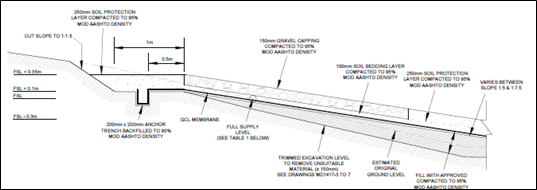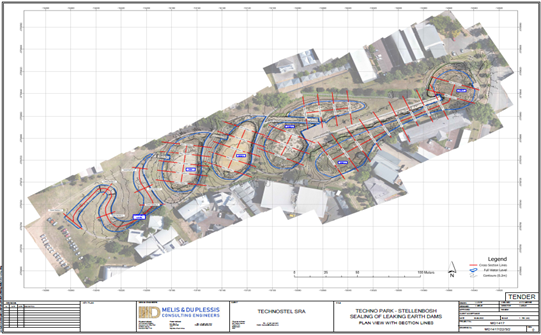
Restoring the Heart of Technopark: The Dam Rehabilitation Project
A Drought’s Lasting Impact
Technopark’s dams are not just water features - they are part of the park’s environmental fabric, once designed to serve both aesthetic and functional purposes. But like many stories of infrastructure, theirs is one of both resilience and renewal.
During the severe drought of 2017, the Stellenbosch Municipality halted the flow of Wynland Water into the Techno Dams. The consequences were immediate and long-lasting. Without regular water inflow, the dams’ Bentonite clay linings dried out and cracked. These cracks allowed porous materials to settle in, severely compromising the dams’ ability to retain water and leading to gradual leakage.
Since then, the linings have not been restored, leaving the dams in a deteriorated and unsatisfactory condition.
Looking to the Future – A Collaborative Path
Quotations for the repair work were received, and funding was allocated. However, two important developments led to a pause in the implementation phase:
Seasonal timing – The onset of the 2025 winter season brought unsuitable conditions for construction, necessitating a postponement until more favourable weather returns.
Administrative processes – It became clear that further alignment with municipal frameworks and agreements would be needed before the project could proceed.
At present, discussions are ongoing, and we are optimistic about reaching the necessary approvals and alignment to move forward with this important initiative.
Our Commitment
The Dam Project remains a top priority for TechstelSRA, as it forms part of a broader vision to restore and enhance Technopark’s natural environment. Once completed, the dams will once again support irrigation, promote biodiversity, and elevate the overall experience of the park for its business community and visitors alike.
Engineering a Solution
Determined to find a sustainable solution, TechstelSRA commissioned a team of geotechnical engineers. They carried out an extensive survey of the dams, produced a detailed report and bill of quantities (BoQ), and proposed a remedial design to restore the structural integrity of the dam system.


